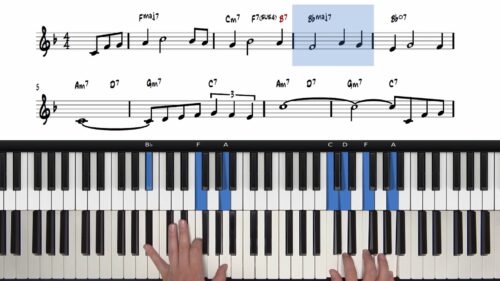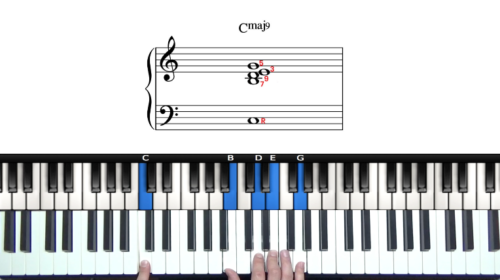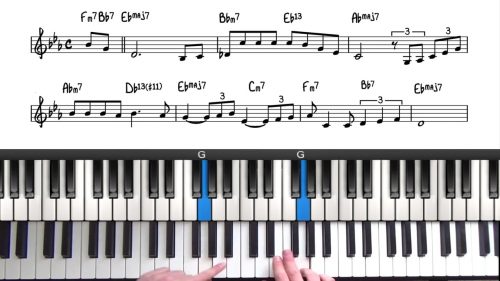9th Chord Voicings in Blues Piano
In this lesson we continue our exploration of warm up drills and we voice the primary chords of the blues with the 9th chord extension.
Chord extensions build upon the foundational blues voicings that we covered in the previous lesson and we also introduce 9th chord arpeggios which can be used as fills when playing the 12 bar blues.
Understanding 9th Voicings
We start by identifying the 9th note of the scale and how this is the same note as the 2nd note of the scale, but an octave higher.
Incorporating the 9th into our chord voicings creates a richer sound and provides us with more melodic and harmonic options. Similar to the previous lesson, we start by visualising the different inversions of the 9th chords and we practice them up and down the keyboard.
How To Apply 9th Voicings
To demonstrate the usefulness of 9th voicings, we incorporate them into the basic blues progression by voicing the primary chords (I, IV, and V) as 9th voicings. We discuss how different keys can unlock different possibilities and challenges when playing the blues, such as a Bb9 chord where it is physically difficult to add a ‘grace note’ into the 9th.
Key Lesson Takeaways
By the end of this lesson you will know how to visualise and play 9th voicings and their inversions for C9, F9, and G9. We also practice running the 9th voicings as arpeggios which will help to build familiarity and dexterity with arpeggio shapes and patterns.
It’s important to understand that chord extensions and not always necessary. When playing the blues we should strive to create a balance between basic triads and more complex voicings.
When playing the slow blues, often a simple triad voicing is the most appropriate voicing to play. Extended chord voicings using the 9th and other extended tones can be used to add interest, colour, and texture; where needed.
Practice Tips
-
Inversion Drills: Practice inverting 9th chords up and down the piano. This helps in visualising different voicing possibilities and also how these voicings can be connected when playing the blues.
-
Arpeggio Exercises: Start by running the arpeggios of the 9th voicings slowly and steadily. Focus on smooth transitions between the octaves and an even tone as you move up the piano.
-
Grace Notes: Incorporate grace notes into your 9th voicings to add dissonance and a bluesy character. Experiment with different placements and chord configurations when adding the grace notes.
-
Left Hand Variations: Alternate between playing octaves, shell voicings, and 10ths in the left hand while practicing 9th voicings in the right hand.






